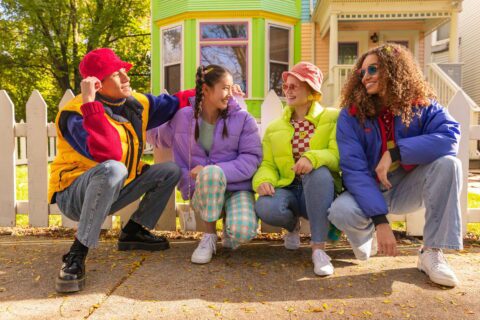Step into the world of modern masculinity, where traditional norms are being redefined and beauty standards for men are undergoing a revolution. From historical roots to the impact of social media, join us as we explore how men’s perception of their appearance has evolved over time. Let’s dive deep into the complexities of male beauty standards in today’s society and uncover the correlation between body image and confidence.
Historical evolution of men’s beauty standards and how they have changed over time
In ancient civilizations, men adorned themselves with elaborate hairstyles and accessories to signify status and power. From the well-groomed beards of Egyptian pharaohs to the intricate tattoos of Polynesian warriors, beauty standards varied across cultures.
During the Renaissance period, ideal male beauty was epitomized by muscularity and proportionality, as seen in famous artworks like Michelangelo’s David. Fast forward to the Victorian era, where a well-groomed appearance and tailored suits became synonymous with masculinity.
The 20th century brought about changes with Hollywood stars setting new trends for men’s grooming and fashion. The rugged charm of actors like Marlon Brando challenged traditional notions of beauty, paving the way for diverse representations of masculinity in media.
Today, men are embracing a more inclusive definition of beauty that transcends stereotypes and celebrates individuality. Social media platforms have played a significant role in reshaping beauty standards by showcasing diverse body types and styles.
The influence of media and societal expectations on men’s perception of their appearance
In today’s digital age, media plays a significant role in shaping men’s beauty standards. From perfectly chiseled jawlines to toned physiques, social media platforms bombard us with idealized images of masculinity.
Societal expectations further compound this pressure by perpetuating traditional norms of attractiveness for men. The idea that real men should be rugged and tough can create an internal conflict for those who don’t fit into this narrow definition.
With the rise of influencers and celebrities promoting unrealistic body ideals, it’s no wonder many men struggle with their self-image. Constant exposure to these unattainable standards can lead to feelings of inadequacy and low self-esteem.
It’s important to recognize the impact that media and societal pressures have on men’s perception of their appearance. By fostering conversations about diverse representations of masculinity, we can begin to challenge these harmful stereotypes and cultivate a more inclusive definition of beauty for all individuals.
The rise of the
In recent years, there has been a noticeable shift in men’s beauty standards. The rise of the metrosexual man challenged traditional notions of masculinity by embracing grooming and fashion trends once considered taboo for men. This movement encouraged self-care and placed importance on personal style and presentation.
Social media platforms have played a significant role in this transformation, showcasing diverse representations of male beauty beyond just ruggedness or athleticism. Influencers and celebrities have used their platforms to redefine what it means to be attractive as a man, breaking barriers and promoting inclusivity.
Men are now empowered to experiment with different hairstyles, skincare routines, and clothing styles without fear of judgment. This newfound freedom allows individuals to express themselves authentically and confidently in their own skin. The rise of this new era signals a positive change towards accepting all forms of beauty regardless of gender norms or stereotypes.
Breaking down stereotypes: challenging traditional ideas of masculinity and beauty
In today’s modern age, the concept of masculinity and beauty is evolving rapidly. Traditional ideas that once confined men to rigid stereotypes are being challenged and broken down.
Men are embracing diverse expressions of themselves, moving away from outdated norms that dictated how they should look or behave. It’s no longer just about rugged toughness; sensitivity and vulnerability are now seen as strengths rather than weaknesses.
The boundaries between what is considered masculine and feminine in terms of appearance are becoming blurred, allowing for a more inclusive definition of beauty. Men are feeling empowered to express their individuality without fear of judgment or ridicule.
By breaking down these stereotypes, men are redefining what it means to be masculine and beautiful in their own terms. This shift towards acceptance and authenticity paves the way for a more inclusive society where everyone can feel comfortable in their own skin.
Men’s mental health and the correlation between body image and confidence
Men’s mental health is a crucial topic that cannot be overlooked when discussing beauty standards for men. The correlation between body image and confidence runs deep, impacting how men perceive themselves and their place in the world. As societal expectations continue to evolve, it is essential for men to prioritize their mental well-being and challenge traditional ideas of masculinity and beauty. By redefining what it means to be a man in the modern age, we can promote healthier attitudes towards self-image and foster a more inclusive society where all individuals feel accepted and valued. Let’s continue this important conversation and support each other on the journey towards embracing diverse definitions of masculinity and beauty.






